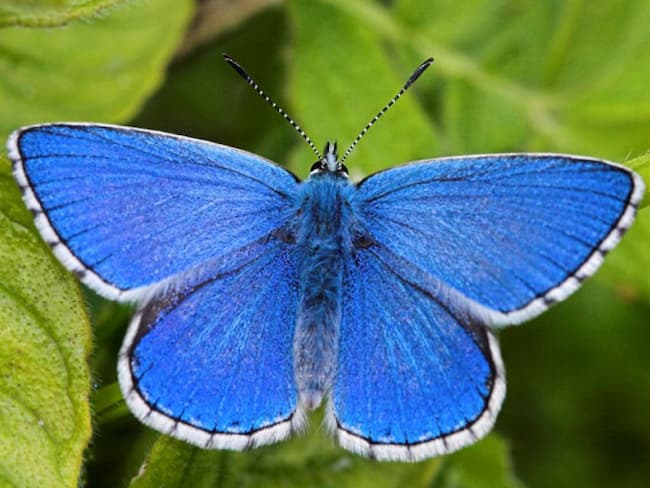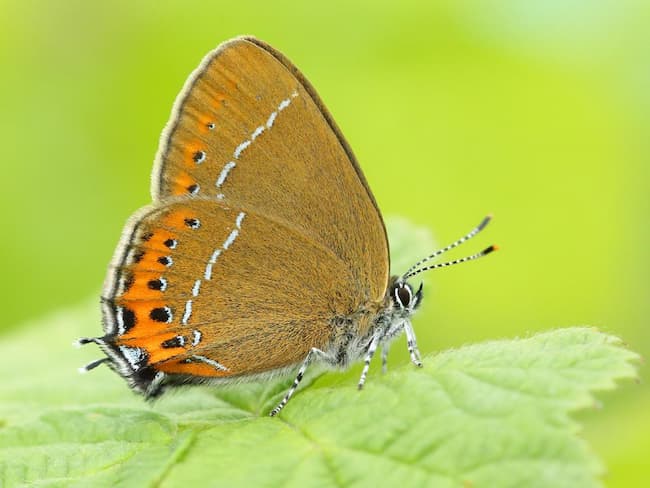Butterflies have long captured the imagination with their delicate beauty and graceful flight. One such captivating species is the Brown Argus (Aricia agestis). In this article, we will explore the fascinating world of the Brown Argus butterfly, including its physical appearance, life cycle, ecological significance, and ways to attract and observe these enchanting creatures in your surroundings.
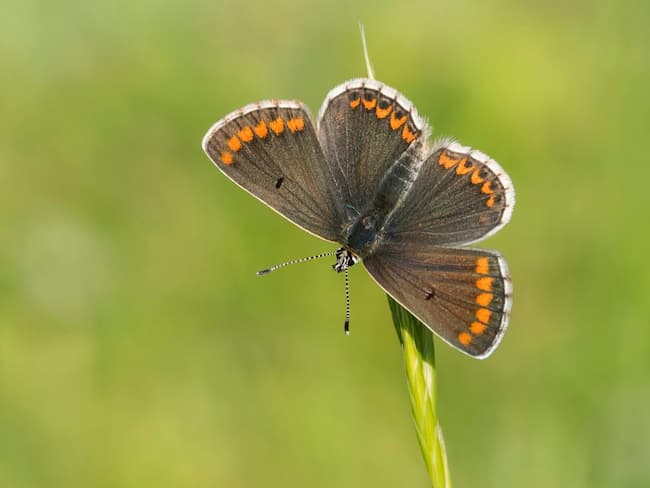
The Enchanting Brown Argus Butterfly
2.1 Physical Appearance
The Brown Argus butterfly is a small and delicate species with a wingspan of around 3-4 centimeters. Its upper wings are adorned with shades of brown and orange, showcasing intricate patterns. However, it is the underside of its wings that truly mesmerizes, displaying a beautiful combination of delicate brown and gray, with a series of orange spots near the edges.
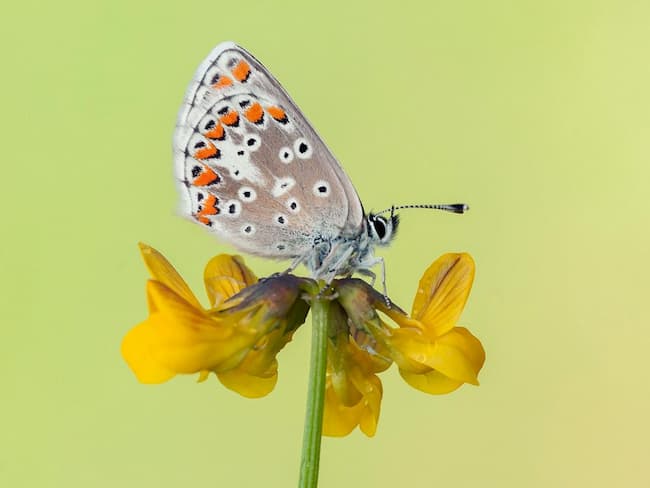
2.2 Habitat and Distribution
The Brown Argus butterfly is predominantly found in Europe, particularly in the southern regions of the United Kingdom. It favors dry and chalky habitats, including grasslands, meadows, and open woodlands. These areas provide the ideal conditions for its preferred food plants and host species.
Life Cycle of the Brown Argus
3.1 Egg Stage
The life cycle of the Brown Argus butterfly begins with the female laying tiny pale yellow eggs on its host plants, which primarily consist of common rock-rose (Helianthemum nummularium). The eggs are usually placed close to the ground on the underside of the leaves.
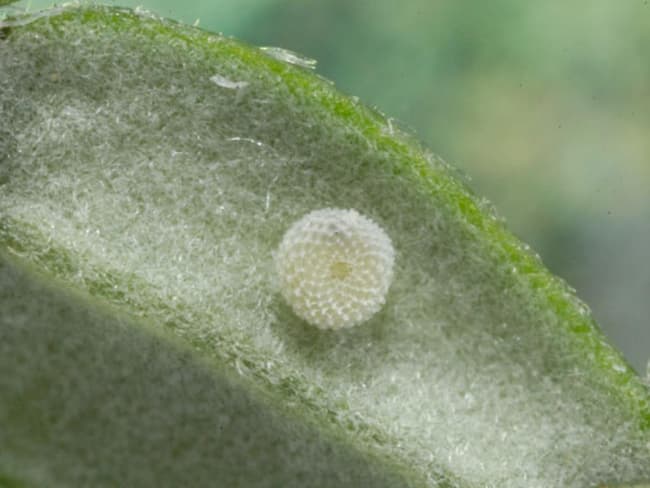
3.2 Larval Stage
Once the eggs hatch, the Brown Argus larvae emerge and begin to feed on the leaves of the host plants. They are greenish in color and blend well with their surroundings to avoid predators. During this stage, the larvae undergo several molts as they grow.
3.3 Pupal Stage
After reaching their full size, the Brown Argus larvae attach themselves to a suitable surface, such as a stem or a leaf, and form a chrysalis. The chrysalis, resembling a small, mottled brown casing, provides protection as the transformation into an adult butterfly takes place.
3.4 Adult Stage
Emerging from the chrysalis, the adult Brown Argus butterfly unfolds its wings, revealing its captivating patterns. The males and females differ in appearance, with the males displaying brighter and more distinct markings. They engage in courtship rituals, with the males actively pursuing the females to mate.
Ecological Significance of the Brown Argus
The Brown Argus butterfly plays a vital role in pollination, contributing to the reproduction of various plant species. As they feed on nectar, they inadvertently transfer pollen from one flower to another, facilitating plant fertilization. This interaction makes them an important part of the ecosystem and supports the diversity of plant life.
Conservation and Threats
The Brown Argus butterfly, like many other butterfly species, faces several threats to its existence. Habitat loss due to land development and agricultural practices, as well as climate change, pose significant challenges to its survival. Conservation efforts, such as preserving and restoring suitable habitats and raising awareness about the importance of butterflies, are crucial for ensuring the continued presence of the Brown Argus in our natural landscapes.
Tips for Observing and Attracting Brown Argus Butterflies
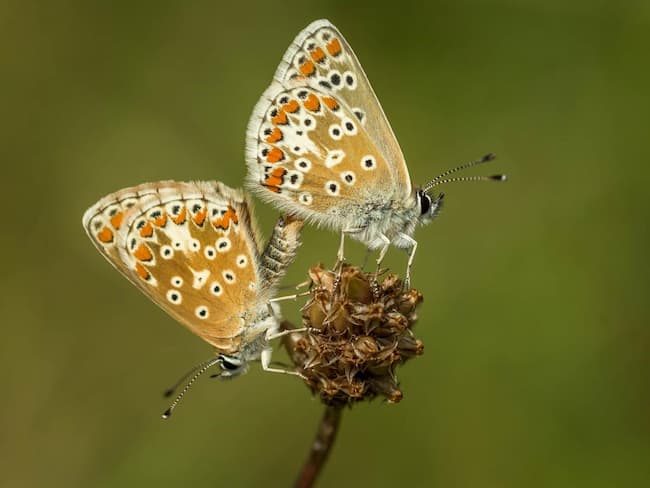
6.1 Plant Native Wildflowers
To attract Brown Argus butterflies to your garden or local green spaces, consider planting native wildflowers such as common rock-rose (Helianthemum nummularium), kidney vetch (Anthyllis vulneraria), and bird’s-foot trefoil (Lotus corniculatus). These plants serve as both nectar sources and host plants for the Brown Argus caterpillars.
6.2 Provide Sunlit Resting Spots
Brown Argus butterflies are known to enjoy basking in the sunlight. Create resting spots in your garden by incorporating flat stones or small rocks in sunny areas. These resting spots not only provide the butterflies with warmth but also offer an opportunity for observation and photography.
Conclusion
The Brown Argus butterfly is a delicate beauty that enchants with its intricate patterns and graceful flight. Its presence in our natural landscapes is not only aesthetically pleasing but also ecologically significant. By understanding its life cycle, conserving its habitats, and providing suitable resources, we can ensure the survival of this enchanting butterfly for future generations to appreciate and cherish.
FAQs
FAQ 1: Are Brown Argus butterflies commonly found in gardens?
While Brown Argus butterflies are predominantly found in grasslands and open woodlands, they may occasionally visit gardens, especially if suitable host plants and nectar sources are available.
FAQ 2: Can I raise Brown Argus butterflies in captivity?
It is generally not recommended to raise wild butterflies in captivity. It is best to appreciate and support their natural habitats and conservation efforts.
FAQ 3: What is the typical lifespan of a Brown Argus butterfly?
The average lifespan of a Brown Argus butterfly ranges from a few weeks to a couple of months, depending on environmental factors and individual circumstances.
FAQ 4: Do Brown Argus butterflies migrate?
Brown Argus butterflies are not known for long-distance migrations like some other butterfly species. They typically stay within their preferred habitats and local areas.
FAQ 5: How can I help conserve Brown Argus butterflies?
You can contribute to the conservation of Brown Argus butterflies by supporting local conservation organizations, planting native wildflowers, and advocating for responsible land management practices that prioritize butterfly habitats.
